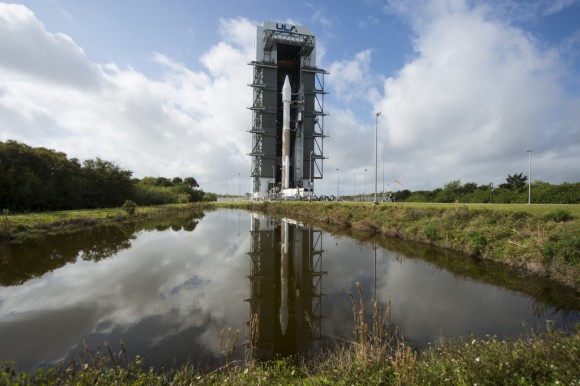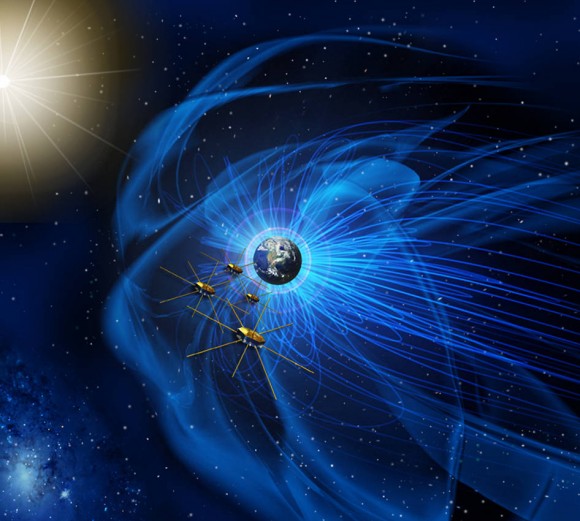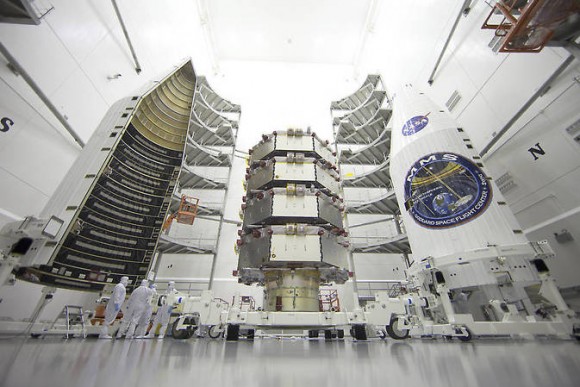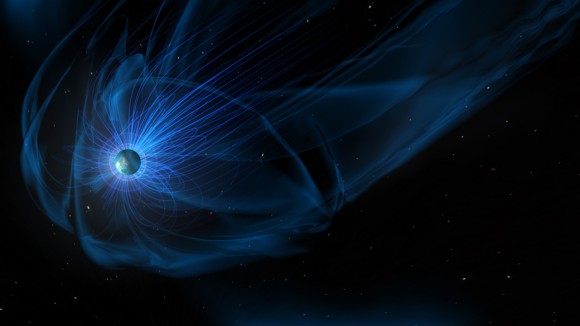
The Atlas V rocket is on the launchpad. NASA’s Magnetospheric Multiscale (MMS) mission – a stack of four identical satellites atop a 191-foot Atlas V rocket – is scheduled to lift off at 10:44 p.m. EDT tonight (March 12, 2015) at Cape Canaveral Air Force Station in Florida. NASA Television launch coverage begins Thursday at 8 p.m. Watch here.
The quartet of identical satellites will examine Earth’s magnetosphere, which helps protect the planet from “space weather” – a mixture of radiation and high-energy particles that bombard Earth from the sun and other sources. It’ll be used to study the phenomenon of magnetic reconnection. More about that below.
Enjoying EarthSky? Sign up for our free daily newsletter today!

MMS will use the Earth’s magnetosphere – the comet-shaped magnetic shield that protects our planet from solar and cosmic radiation – as a laboratory to study the microphysics of magnetic reconnection. That is a little-understood phenomenon – yet a fundamental process that occurs throughout the universe – when magnetic fields connect and disconnect explosively, releasing energy and accelerating particles up to nearly the speed of light.
Unlike previous missions that have observed only evidence of magnetic reconnection events, MMS has sufficient resolution to observe and measure reconnection events as they occur.
Each of the four satellites, flying together as a tightly coordinated, pyramid-shaped fleet through the magnetosphere, will carry identical instruments and will thus be able to gather a multi-dimensional view of the reconnection processes that has eluded previous studies. This is necessary because the area where magnetic reconnection occurs – the so-called “diffusion region” – passes by the satellites in just a tenth of a second. Together, the four satellites will provide extremely precise time resolution of the process.

Image credit: NASA/Ben Smegelsky
Here’s NASA’s movie about MMS and the phenomenon of magnetic reconnection, which occurs near Earth, on the sun, in other stars and in the vicinity of black holes and neutron stars.

Bottom line: NASA’s Magnetospheric Multiscale (MMS) mission – a stack of four identical satellites atop a 191-foot Atlas V rocket – is scheduled to lift off at 10:44 p.m. EDT on March 12, 2015 at Cape Canaveral Air Force Station in Florida. NASA Television launch coverage begins Thursday at 8 p.m.











